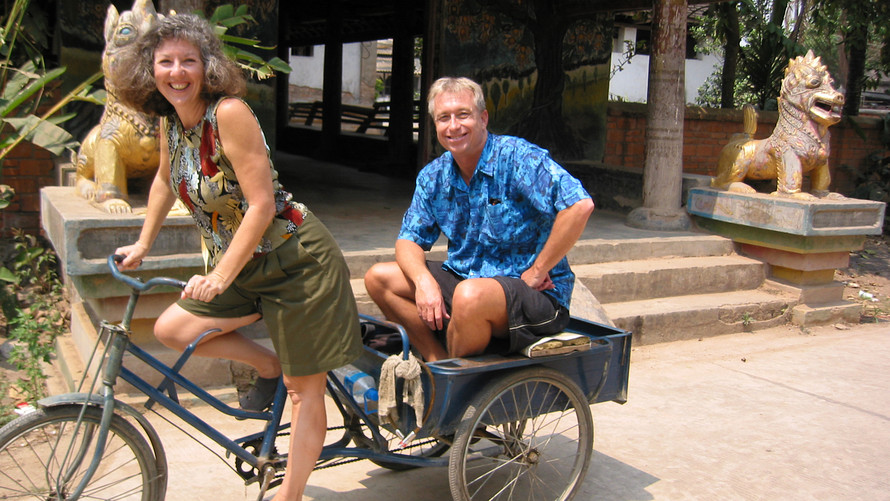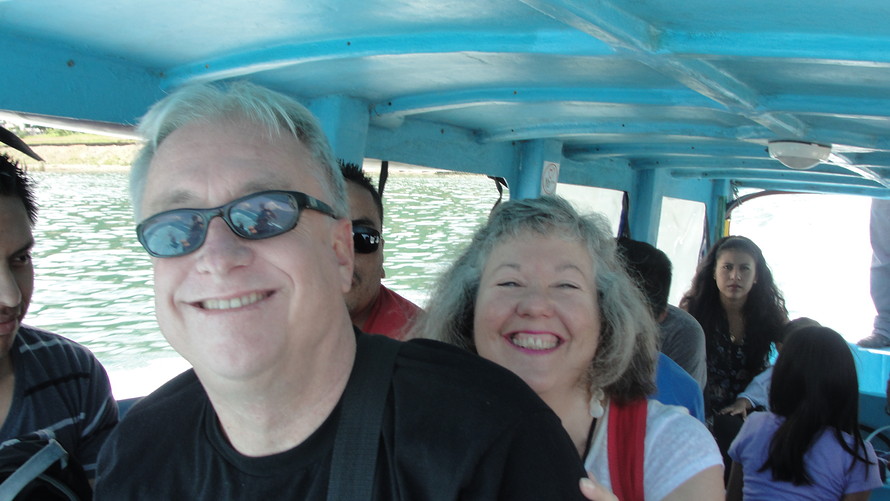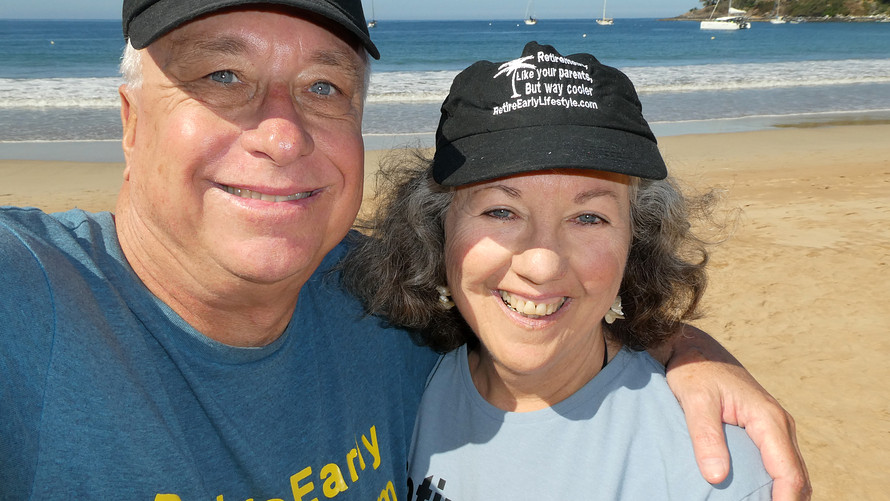By their mid-30s, Billy and Akaisha Kaderli, now 66, seemed to have it all.
Billy was a successful stockbroker, and Akaisha ran a popular restaurant. They went out to eat and drank nice wine; hosted parties; and lived in a posh home in Santa Cruz, Calif., with a hot tub, garden and huge redwood deck that Akaisha calls “her dream home.” But they barely got to see one another as both had long, but different, hours, with Billy getting into work early and Akaisha working nights. “We were burned out,” Akaisha explains. Billy adds: “I started to wonder how much longer I could continue on that treadmill.”
And that’s when Billy had an idea: As a stockbroker, he’d seen his clients traveling and retiring and had a sense of how much money this took. He started thinking that maybe he and Akaisha could do it, too — if they sold their home, the restaurant and their cars, scaled back their lifestyle and moved somewhere inexpensive.
“I started penciling in the numbers,” says Billy, who is a proponent of the 4% rule. “The big question was, how much is enough to live on?”
For the next two years the couple meticulously tracked their spending and the crunched numbers on inexpensive places to live. In 1991 — after selling their major assets and investing that money — they retired at the age of 38, and have lived abroad on about $30,000 a year since that time, they say. (They now receive Social Security, but before that they lived off the proceeds of their investments.)
Here’s what it’s like, for the Kaderlis, to live abroad, what it costs, the challenges faced, and more.
Their philosophy for keeping living costs low: ‘Geographical arbitrage’
The Kaderlis have lived in Thailand, Guatemala, Vietnam and Ecuador, among other spots. They pick where they live based on a lot of things, like great weather, where they can learn a new skill (Thai massage, anyone?) and where there are interesting volunteer opportunities, but cost is the biggest factor. “I call it geographical arbitrage,” says Billy. “We pick places where money goes far and quality of life is high.”
 The Kaderlis
The Kaderlis
For the past couple of years, the couple has been living in the Lake Chapala area of Mexico (this is their second stint living here). It’s a spot popular with expats thanks to average temperatures between 75 and 85 degrees Fahrenheit (National Geographic ranked the climate the second best in the world), proximity to a gorgeous waterfront (the lake is the largest freshwater lake in Mexico) and a friendly, laid-back vibe. It’s also a little over a half hour from Guadalajara, Mexico’s second largest city, which has an international airport.
Its low cost of living doesn’t hurt: The Kaderlis spend about $1,750 a month to live here, they say. Their biggest expenses, besides travel — both still go back to the U.S. once a year or so, and they take mini-trips throughout Mexico — are rent and food. They pay about $300 a month for their apartment. They spend about $200 to $300 a month on groceries and add that they can easily match that amount if they are dining out a lot or entertaining. They keep food costs down because Billy, who is a French-trained chef, cooks most of their meals.
Though they live on a modest budget, Akaisha says they don’t feel deprived. “We’ve lived in paradises all over the world … that’s our entertainment,” she says. Plus, she adds, “we’ve never been big consumers. … We don’t have all the doodads that people have.”
And now that they’ve become permanent residents of Mexico — Billy says the process took about six weeks and required some annoying “bureaucracy” but wasn’t too bad — they get senior discounts on first-class buses and free admission to many museums and parks.
 The Kaderlis
The Kaderlis
Health and safety
The Kaderlis have taken many different approaches to health care through the years, depending on where they lived, including what Akaisha calls “going naked.” (That’s her term for having no U.S.-based health insurance and instead relying on savings to pay for procedures as they need them.) They once had to pay about $3,000 in out-of-pocket costs for health care in Guatemala when Akaisha badly hurt her finger getting off a bus. (They said the care was good, and her finger is fine now.) They’re now enrolled in Medicare so they could get care in the States if they needed it, but Akaisha says that they’ve “never used it.”
Akaisha and Billy say that people often wonder if their current town in Mexico is safe, because they see headlines about crime in Mexico. But Billy says they haven’t had an incident as they travel about via public transit. But, he concedes, some of “the border towns are rough.”
There are other downsides to the area, the couple say. You can’t drink the tap water: “We have 20-liter bottles of drinking water delivered as needed with a phone call,” says Billy. Other downsides: “Loud culture with parades, music and ‘cojetes’ [or firecrackers] going off often,” he adds, as well as increasing traffic “as more and more North Americans [are] moving into the area.”
 The Kaderlis
The Kaderlis
What it’s like to be retirees for decades
If you’re wondering whether the Kaderlis are able to fill up their days without the help of a full-time job, it sure seems that way. They write a website about their lives, have authored a book on retiring early, and have volunteered all around the world. Akaisha has taught the locals in Chapala to do Thai massage; Billy coaches and raises money for local sports teams.
And even when they’re not doing one of those myriad things, “we keep busy,” says Billy. “We wake up in the morning with nothing to do, and at the end of the day we only have half of it done.”








